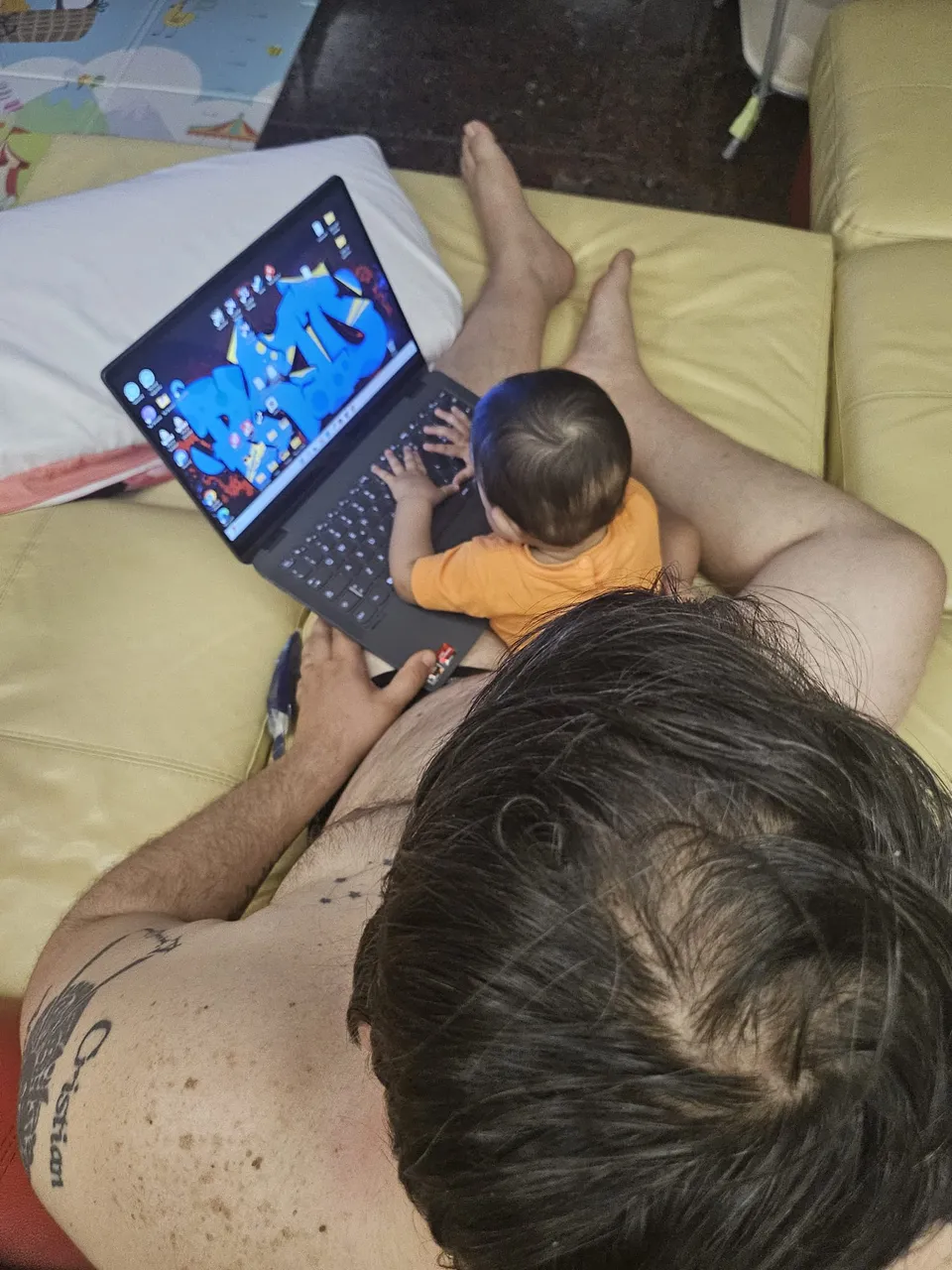
As you may have understood from the introductory aphorism I'm not referring to one of the Teenage Mutant Ninja Turtles!
Browsing around the internet a bit here and there I found the seven principles of the "Grand Master" (and I'm not talking about Splinter) for thinking like a genius; are taken from Michael J. Gelb's book "Thinking like Leonardo".

I want to list them for you and then, for each one, say just four words to avoid this post becoming a 30,000 character treatise, lol!
The first principle is that of Sfumato, this word refers to a painting technique but it is something that also applies to life, it should be thought of as the willingness to embrace doubt, paradox and uncertainty.
If you think about it carefully, a nuanced thought is the exact opposite of a dichotomous thought in which everything is seen as black or white and which prevents us from having a real vision of the complexity of things.
If we analyze any problem in absolute terms we risk losing all the nuances that represent the uniqueness of that problem and that could help us find a solution.
Think about it, when you are faced with a problem or achieving an objective, the best progress you make is in the spaces between our conscious efforts, while we are in bed for example or while walking immersed in nature; the incubation periods therefore, from what we can deduce, are fundamental and in fact Leonardo himself alternated periods of intense work with periods of total rest.
The second principle is that of "Curiosity", we are all curious. We were certainly more curious when we were little but deep down we still are today; childhood wonder can also be preserved in adulthood and, as Leonardo did, it can be exercised by continually asking questions.
The third principle is that of "Demonstration", here there is little to say. Leonardo relied on practical experience to verify his ideas.
Let's go ahead and find the principle of "Sensation", this is what today in NLP is defined as sensory acuity and consists of the ability to make a large number of distinctions based on the senses.
Fifth principle "Art/Science", in his book Galb uses these terms to mean Leonardo's ability to make use of both logical and analytical thinking with attention to detail and imaginative thinking focused on an overall vision.
We now come to the "Connection", Leonardo was probably the first ever systemic thinker since he used to observe and appreciate the connection between different things and phenomena, do you want an example?
His knowledge of acoustics arose from his connections with the study of water, truly brilliant, don't you think?
I want to conclude these seven principles with that of "Corporality", Gelb in this case refers to cultivating grace, physical form, ambidexterity; Leonardo was very comfortable in his relationship with his body, he was handsome and strong and in his time he was known and admired for these characteristics.
This naturally goes against the stereotype of the genius with the "nerd" physique... Stereotypes are bad stuff!
Well I think I can stop here, these are the seven principles that M. Gelb lists in his book and which, if applied, should bring us closer to Leonardo's genius.
What do you think about it?
Have you ever heard of it?
You know the book from which I extrapolated them.
Let me know your thoughts and ideas in the comments below.
I hug you!


Come avrai capito dall'aforisma introduttivo non mi sto riferendo a una delle Tartarughe Ninja!
Girando un po' qua e un po' là per la rete ho trovato i sette principi del "Grande Maestro" (e non sto parlando di Splinter) per pensare come un genio; sono tratti dal libro di Michael J. Gelb "Pensare come Leonardo".

Te li voglio elencare e poi, per ognuno, dire giusto quattro parole in modo da evitare che questo post diventi un trattato di 30000 caratteri, lol!
Il primo principio è quello dello Sfumato, con questa parola si intende una tecnica di pittura ma è qualcosa che si applica anche alla vita, va pensato come la disponibilità ad abbracciare il dubbio, il paradosso e l'incertezza.
Se ci rifletti bene un pensiero sfumato e l'esatto opposto di un pensiero dicotomico in cui si vede tutto come bianco o nero e che impedisce di avere una visione reale della complessità delle cose.
Se analizziamo un qualsiasi problema in termini assoluti rischiamo di perdere tutte le sfumature che rappresentano l'unicità di quel problema e che potrebbero aiutarci a trovare una soluzione.
Riflettici, quando ti poni di fronte a un problema o al raggiungimento di un obiettivo i progressi migliori li hai negli spazi tra i nostri sforzi coscienti, mentre siamo a letto ad esempio o mentre passeggiamo immersi nella natura; i periodi di incubazione quindi, da quel che si evince, sono fondamentali e infatti Leonardo stesso alternava periodi di lavoro intenso a periodi di riposo totale.
Il secondo principio è quello della "Curiosità", tutti siamo curiosi. Sicuramente siamo stati più curiosi quando eravamo piccoli ma in fondo lo siamo ancora oggi; lo stupore infantile può essere conservato anche in età adulta e, come faceva Leonardo, lo si può esercitare ponendosi continue domande.
Terzo principio è quello della "Dimostrazione", qui c'è poco da dire Leonardo si basava dell'esperienza pratica per verificare le sue idee.
Andiamo avanti e troviamo il principio della "Sensazione", questo è quello che oggi in PNL si definisce acutezza sensoriale e consiste nella capacità di fare un grande numero di distinzioni basate sui sensi.
Quinto principio "Arte/Scienza", nel suo libro Galb con questi termini intende la facoltà di Leonardo di avvalersi sia di un pensiero logico e analitico con attenzione sui dettagli sia di un pensiero immaginativo focalizzato su una visione di insieme.
Arriviamo ora alla "Connessione", probabilmente Leonardo fu in assoluto il primo pensatore sistemico poiché era solito osservare e apprezzare la connessione tra cose e fenomeni diversi, vuoi un esempio?
Le sue conoscenze sull'acustica scaturirono dai collegamenti con lo studio dell'acqua, davvero geniale, non credi?
Voglio concludere questi sette principi con quello della "Corporalità", Gelb in questo caso si riferisce al coltivare la grazia, la forma fisica, l'ambidestrismo; Leonardo era molto a sua agio nella relazione con il suo corpo, era bello e forte e al suo tempo era conosciuto e ammirato per queste caratteristiche.
Questo naturalmente va contro quello che è lo stereotipo del genio con il fisico da "secchione"... Brutta roba gli stereotipi!
Bene credo di potermi fermare qui, questi sono i sette principi che M. Gelb nel suo libro elenca e che, se applicati, dovrebbero avvicinarci al genio di Leonardo.
Tu cosa ne pensi?
Ne avevi mai sentito parlare?
Conosci il libro dai quali li ho estrapolati.
Fammi sapere i tuoi pensieri e le tue idee nei commenti qui sotto.
Ti Abbraccio!

The texts are translated with simultaneous translators; for the avoidance of doubt I have decided that they will all be translated exclusively with Google Translate.
Of course, English is not my first language but I try, forgive any mistakes and imperfections of Translate.